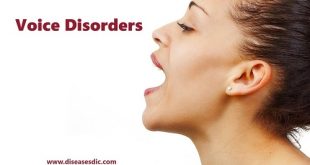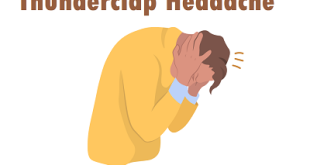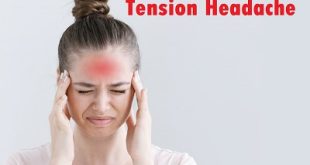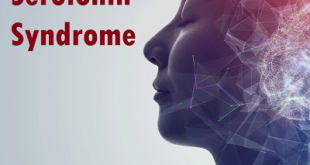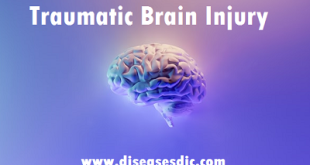Definition
Vertigo is a type of dizziness that can last just for a short period of time (minutes) or that can last for hours or even days. People who have vertigo have a false feeling of their surroundings moving or spinning. This is usually accompanied by a feeling of sickness (nausea) and a loss of balance. The condition can also cause someone with the condition to be sick (vomit). Vertigo is a symptom and not a condition in itself. In most cases, there is a medical condition that causes vertigo. However, sometimes the cause is unknown.
Types of Vertigo
The two main types of vertigo are:
Peripheral Vertigo
It is caused by a problem in areas of the inner ear or the vestibular nerve, which connects the inner ear and the brain. This is the most common type of vertigo.
Central Vertigo
It happens when there’s a glitch in the brain, particularly in an area of the brain called the cerebellum.
RSV-HSN: A New Type of Vertigo
Researchers recently discovered a new kind of vertigo. Scientists called it “recurrent spontaneous vertigo with head-shaking nystagmus” (RSV-HSN).
To diagnose this condition, participants sat in a dark room while an examiner moved their heads forward and then side-to-side for about 15 seconds. Next, researchers video-recorded the participants’ eye motions. Results showed those with RSV-HSN had eye movements, known as “nystagmus,” that lasted longer than it does in others with vertigo.
The scientists say that, compared to other types of vertigo, RSV-HSN involves more severe bouts of motion sickness. In the study, people with RSV-HSN had attacks that included nausea, vomiting, headaches, and intolerance of head motions. They experienced symptoms anywhere from a few times a week to once a year. At this point, the cause of RSV-HSN isn’t known, but the condition does seem to respond well to medication.
Pathophysiology
- The neurochemistry of vertigo includes six primary neurotransmitters that have been identified between the three-neuron arc that drives the vestibulo-ocular reflex (VOR). Glutamate maintains the resting discharge of the central vestibular neurons and may modulate synaptic transmission in all three neurons of the VOR arc.
- Acetylcholine appears to function as an excitatory neurotransmitter in both the peripheral and central synapses. Gamma-Aminobutyric acid (GABA) is thought to be inhibitory for the commissures of the medial vestibular nucleus, the connections between the cerebellar Purkinje cells, and the lateral vestibular nucleus, and the vertical VOR.
- Three other neurotransmitters work centrally. Dopamine may accelerate vestibular compensation. Norepinephrine modulates the intensity of central reactions to vestibular stimulation and facilitates compensation. Histamine is present only centrally, but its role is unclear.
- Dopamine, histamine, serotonin, and acetylcholine are neurotransmitters thought to produce vomiting. It is known that centrally acting antihistamines modulate the symptoms of acute symptomatic vertigo.
Vertigo risk factors
Factors that increase your risk of VAD include:
- Cardiovascular diseases, especially in older adults
- Recent ear infection, which causes an imbalance in the inner ear
- History of head trauma
- Medications, such as antidepressants and antipsychotics
Causes of Vertigo
Vertigo is often the result of an inner ear problem.
- The most common cause is benign paroxysmal positional vertigo (BPPV). BPPV occurs when tiny calcium particles clump together in the part of the inner ear that helps control our balance, affecting the messages sent from your inner ear to your brain.
- Other inner ear problems that can cause vertigo are Meniere’s disease, where there is associated tinnitus and hearing loss, and 2 conditions that involved swelling or infection of the inner ear, vestibular neuronitis and labyrinthitis.
- Other causes of vertigo include head injuries, circulation problems, and infections.
- Rarely, vertigo is caused by serious problems such as a brain tumor or a stroke.
Symptoms
- If you have vertigo, you may feel as though you are spinning, falling or tumbling in space, or standing still while your surroundings are moving.
- It often begins suddenly and may vary in intensity. It may be constant or it may come and go.
- Vertigo or giddiness is often mistaken for light-headedness or dizziness. Light-headedness is a feeling that you are going to lose consciousness or faint (pass out). This feeling isn’t caused by an inner ear problem but is due to a lack of oxygen flowing to the brain.
- If you have vertigo it’s normal to feel out of control and frightened – but in most cases, the causes of vertigo aren’t a serious health threat.
You may also have these symptoms:
- Nausea and vomiting
- Tinnitus or ringing in your ears
- Decreased hearing
- Ear pain
Complications of Vertigo
Complications can be due to serious diseases, failure to seek treatment can result in serious complications and permanent damage. Once the underlying cause is diagnosed, it is important for you to follow the treatment plan that you and your health care professional design specifically for you to reduce the risk of potential complications including:
- Adverse effects of treatment
- Anxiety
- Brain damage
- Depression
- Difficulty performing daily tasks
- Diminished overall quality of life
- Impaired balance and coordination
- Nerve problems that cause pain, numbness or tingling
- Paralysis
- Permanent hearing loss
- Permanent loss of sensation
- Spread of cancer
- Spread of infection
- Traumatic injuries from falls
- Unconsciousness and coma
Diagnosis and test
To assess what’s causing your vertigo, doctors will give you a number of subtests that examine the effectiveness and interaction of the vestibular system, or inner ear, the somatosensory system, or flex and pressure sensors in your feet, and the vision system — as well as how these systems contribute to your overall stability and balance. The assessment helps determine which system or systems may be contributing to your symptoms and gives direction for treatment.
The assessment includes a videonystagmography (VNG) or electronystagmography (ENG) test. The VNG or ENG evaluation is separated into three subtests.
Oculomotor
This assesses the oculomotor system, the visual system for balance. In this part of the test, we measure voluntary eye movements by having you complete a series of exercises while visually following a dot on a light bar.
Positional or Positioning
This part of the test focuses on the vestibular system, which is the balanced structure of the inner ear. We will ask you to move your head, or head and body, to monitor how the vestibular system reacts to these movements and to changes in gravity.
Calorics
This measurement determines how well the vestibular system responds by applying warm and cool air into each ear canal separately. Comparisons are then made of the vestibular system’s performance from one side to the other, and whether there’s a possible weakness or hyperresponse in the inner ear. During the caloric test, it isn’t unusual to experience a sensation of movement, which goes away immediately when the test is complete.
Treatment
You may experience dizziness and moderate to severe false spinning sensations that can cause loss of balance, disorientation (which may cause falls), vomiting, sweating and severe nausea. It’s important to identify the cause of your vertigo symptoms to be certain it’s not a symptom of a more serious underlying disorder in the ear or nervous system, as well as to determine the best course of treatment.
It varies depending on the underlying cause of vertigo. Some cases of vertigo will resolve on their own since the brain is able to adapt to changes in the inner ear. However, for moderate to severe vertigo there are three common treatments:
Physical therapy/repositioning maneuvers: Some physical therapists are trained in vestibular rehabilitation, which helps strengthen the vestibular system to improve vertigo. They can also teach you ways to move around safely despite vertigo. There are also head movements helpful to those with BPPV, which helps clear calcium the ear canal.
Medication: A doctor may switch your current medications if they are the cause of vertigo. Medications to help vertigo, will either treat the underlying cause of vertigo or help suppress the symptoms of vertigo caused by a recurring condition. For causes like Meniere’s disease, vestibular suppressants are used. These medications may include benzodiazepines, which work by suppressing the nervous system. It associated with migraines is often treated with benzodiazepines, antiemetics and antihistamines. It can be prevented with either antidepressants or calcium channel antagonists, which prevent constriction in the arteries.
Surgery: Rare causes of vertigo, such as those caused by tumor or brainstem injury, may require surgery.
Other types of treatment
Your doctor will recommend an individualized treatment plan, which may include:
- Medications, including muscle relaxants or anti-anxiety drugs
- Balance retraining, utilizing both static and dynamic balance exercises
- Sensory organization training
- Gaze stabilization exercises
- Habituation exercises
- Compensatory strategies (behavioral strategies to achieve rehabilitation goals)
- Aerobic conditioning
- Canalith repositioning treatment (CRT), also known as the Epley maneuver (used to treat the most common type of vertigo, called benign paroxysmal positional vertigo, which is caused by calcium carbonate crystals (ear rocks) falling or being dislodged in the inner ear)
Medications to treat vertigo
There are a variety of drugs that may be prescribed to treat vertigo. These medications include:
Antihistamines, such as Antivert (meclizine) or Phenergan (promethazine), may be prescribed to treat nausea and vomiting associated with vertigo. These decrease the feelings of motion sickness associated with vertigo. Antihistamines can sometimes cause drowsiness.
Benzodiazepines, such as Valium (diazepam) or Ativan (lorazepam), often relieve vertigo caused by inner ear disorders such as Meniere’s disease, labyrinthitis, migraine-associated vertigo, or vestibular neuronitis. These drugs relieve vertigo by suppressing the vestibular system. These drugs are typically given in small doses to avoid addiction to the medication. These drugs also have a side effect of drowsiness.
Diuretics, or water pills—such as Dyazide (triamterene/HCTZ), Lasix (furosemide), or acetazolamide—are often prescribed to those with Meniere’s disease. Diuretics help remove inner ear fluid that can cause vertigo. Side effects of diuretics can include dehydration and frequent urination.
Corticosteroids, such as Decadron (dexamethasone) or oral prednisone, have been found to decrease the length and frequency of vertigo in those with Meniere’s disease. These drugs should be used for a short time; otherwise, you can become steroid-dependent and develop adrenal insufficiency.
Prevention
It can affect your balance and may make you feel unsteady, you are at risk of falls or accidents. To reduce your risk of a fall or accident:
- Get out of a bed or chair slowly
- Wear low-heeled shoes that fit properly
- Use handrails on stairs
- Install grab bars in the bathroom. Don’t use towel racks for balance
- Use a shower stool. Also, apply adhesive strips to the shower or tub floor
- Use a walking aid if needed
- If you become dizzy or disoriented while driving, you could hurt yourself and others. It is best to avoid driving until symptoms subside
- At work, let your employer know about your symptoms, especially if your job involves operating machinery or climbing ladders
 Diseases Treatments Dictionary This is complete solution to read all diseases treatments Which covers Prevention, Causes, Symptoms, Medical Terms, Drugs, Prescription, Natural Remedies with cures and Treatments. Most of the common diseases were listed in names, split with categories.
Diseases Treatments Dictionary This is complete solution to read all diseases treatments Which covers Prevention, Causes, Symptoms, Medical Terms, Drugs, Prescription, Natural Remedies with cures and Treatments. Most of the common diseases were listed in names, split with categories.

